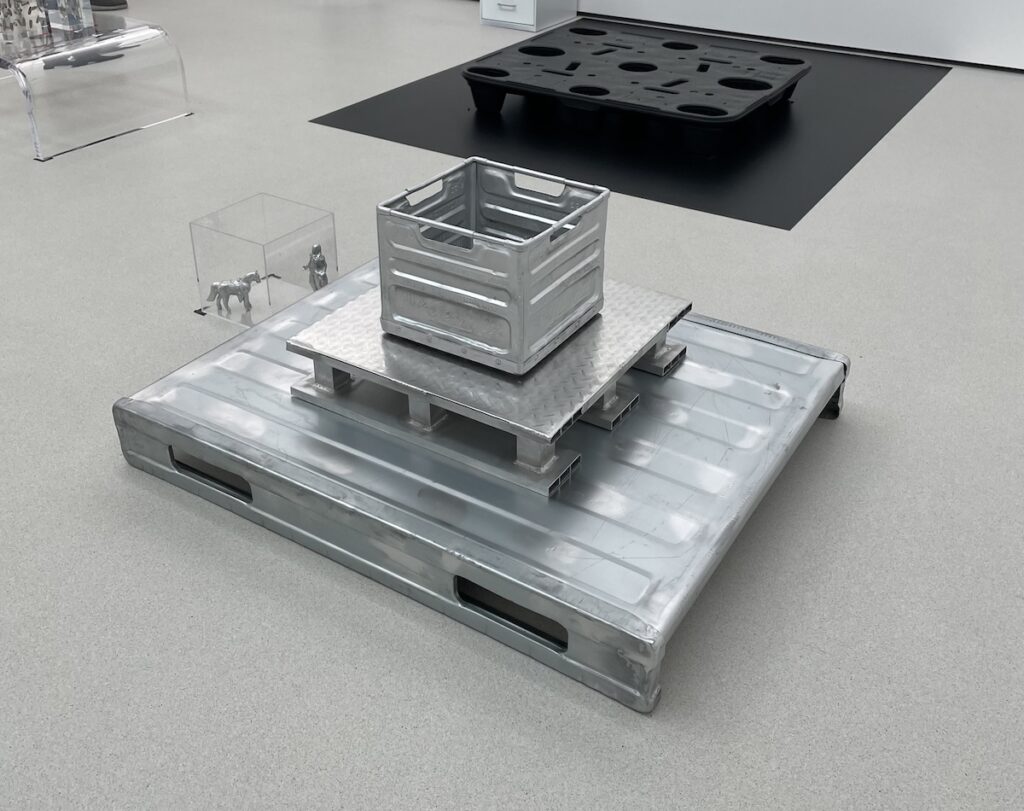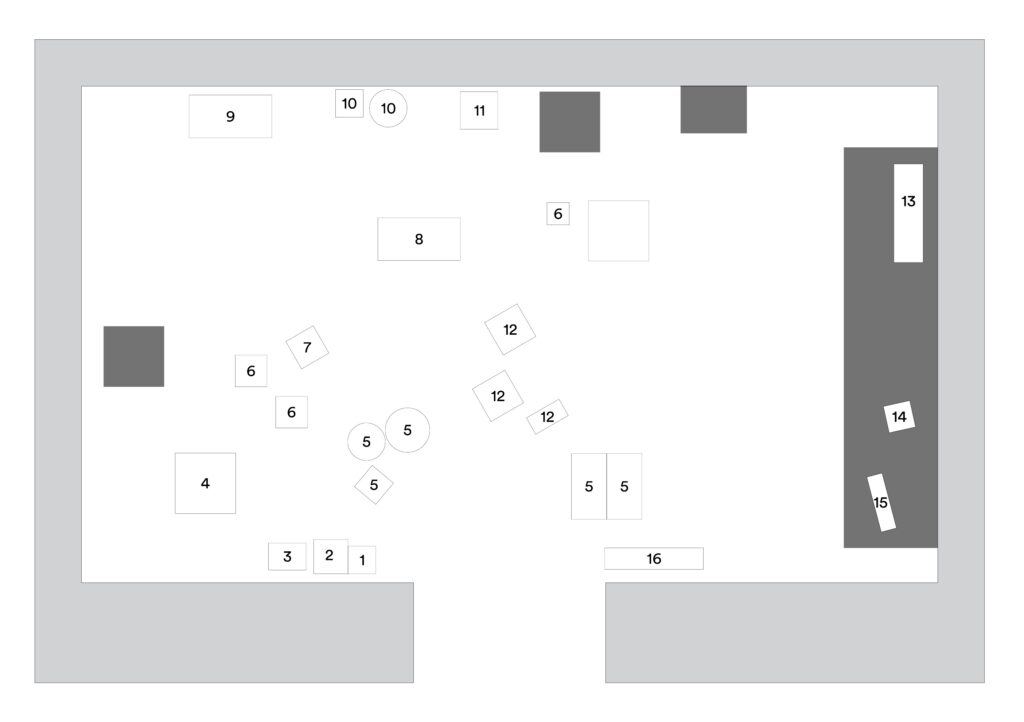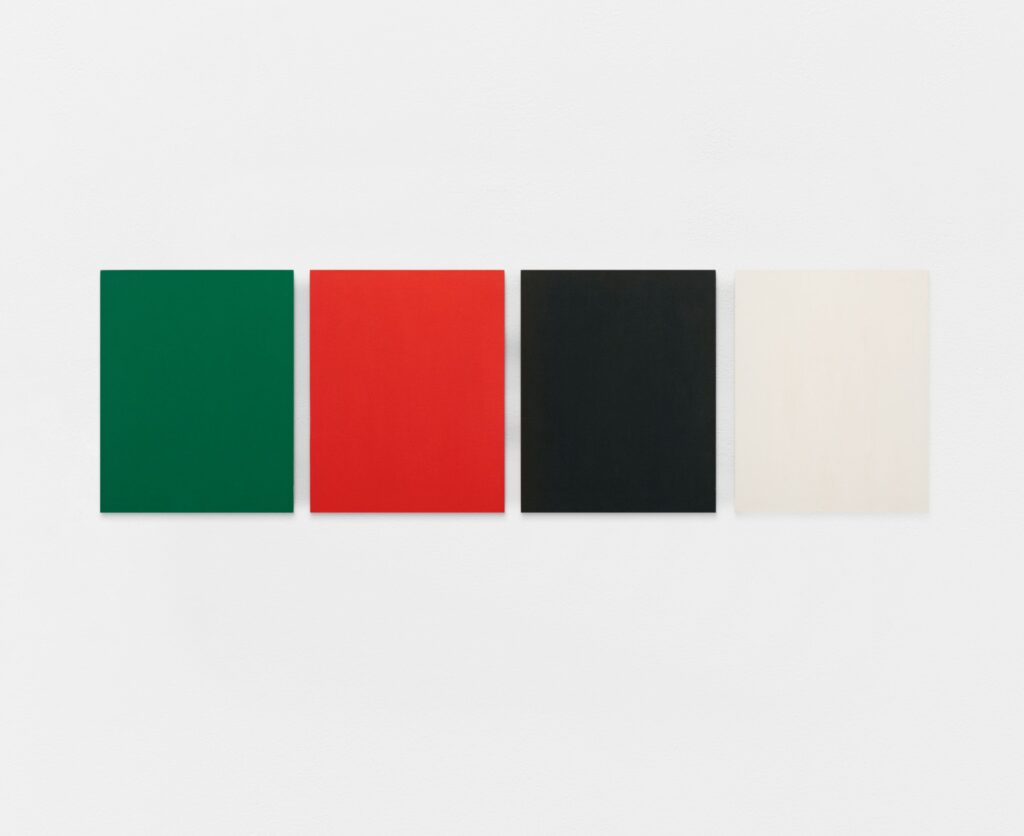
Now that she’s been having some shows, Cady Noland is known to make changes to installations of her work, even dramatic ones, even last minute. So maybe it was not so surprising to realize she added a new work to the exhibition at Glenstone last October, which came so late in the process it did not appear on the museum’s downloadable checklist.
And while there were also shipping palettes from Amazon stacked in the gallery that were also not on the checklist, the status of this work, Untitled (2024), was only uncovered/confirmed three weeks later, when Alex Greenberger reviewed the show for ARTnews. And it took still more weeks to add it to the checklist, the only prepared information available to visitors.

At the time, I wrote that such a move was not an error: “This incompleteness, this inaccuracy, is part of the encounter; this disconnect between what you see and what you’re told is part of the experience.”
Well, now I wonder if it might have been omitted for reasons other than coy mystery. Because the most prominent elements of the work Noland added are a palette with the Amazon sticker still attached, and a milk crate stamped with a threat from the Pinkertons. The Pinkertons who chase down milk crate thieves, but who are most famous for attacking striking steelworkers on the orders of Andrew Carnegie and Henry Frick.
I had not realized that last summer, before the museum had fully reopened from its remodeling, Glenstone’s hourly workers voted to form a union, and that the Raleses had hired the same anti-union lawyers and consultants as everyone else—including Amazon. Kriston Capps reported on the union’s efforts and voting almost a year ago. That would have been right around the time Noland was installing her show.
There is not much information beyond Capps’ early reporting. The last post on the instagram account for Glenstone Museum Workers Union, affiliated with the Teamsters, was from November 22nd. It says two bargaining sessions were completed, in September and October–and that the November 2024 meeting had been canceled without explanation. A December meeting was TBD. Noland’s show opened October 17th, in what seems to be the middle of a breakdown of negotiations.
To drop a pyramid of unionbusting references in the center of the gallery could be read as a show of solidarity with the union. If anyone knew to look. Now the prolonged omission of the Pinkertons work from the checklist feels like it could have been a move to deflect or diminish the impact of Noland’s gesture of support.
Unless? Do we really know that Noland’s invocation of the Pinkertons thugs isn’t a shoutout to management, an homage to the Fricks of our day, the industrialist connoisseurs who bought basically every major piece of the artist’s work to come up for sale in the last twenty years? If it was, maybe Glenstone would have bought it. Or they would have at least included Noland’s loans in the documentation of the show.
Previously, related: Cady Loan’d

